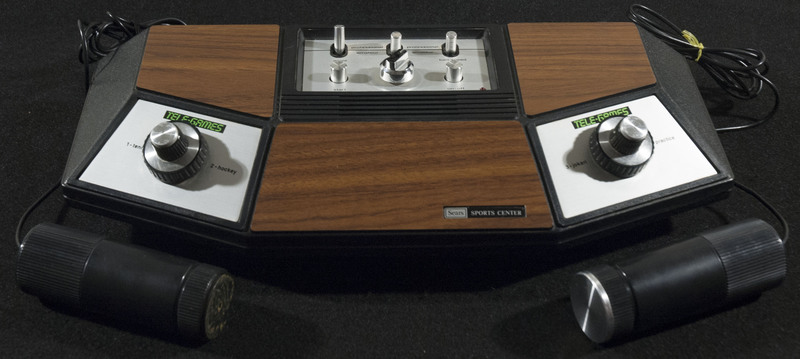First Generation (1972-1977)
The first generation of video game consoles lasted from 1972 to 1977, and the consoles follow some basic defining properties. These first generation consoles did not use a microprocessor, but rather used discrete transistor-based logic with very limited and simplistic players and objects in 1-bit (two color) graphics. Additionally, the entire playing field usually existed on one screen, with either no audio at all or audio information being delivered through a single channel. The earliest games grew out of the spare time of individuals on university mainframe computers using digital technology. However, first generation game consoles picked up in development during the late 1960s when television engineer Ralph Baer had the idea of interactive television, code name “The Brown Box.” First starting as a two-player game in which dots followed each other across the screen, “The Brown Box” eventually gained a third machine-controlled dot, two controllers, a light gun, and sixteen console switches to select a game to be played. With these updates, “The Brown Box” was released in 1972 as the Magnavox Odyssey.
Sears Sports Center (Pong)
The ping-pong style of gaming set forth by the Magnavox Odyssey was the basis for Pong, also released in 1972 by Atari Incorporated. Magnavox Odyssey inspired Nolan Bushnell, co-founder of Pong, to hire Allan Alcorn to create an electronic tennis game as a training exercise. Impressed by Alcorn’s prototype, Bushnell, along with Atari, Inc. co-founder Ted Dabney, decided to manufacture the game.
First installed in a local bar, Pong quickly garnered attention, and became the first commercially successful game in video game history. Due to the game’s widespread success, Atari developed a home version of Pong in 1974, using the same digital technology as in the original arcade version of the game. While creating Home Pong, Alcorn and Atari engineer Harold Lee developed a single chip to replace hundreds of wires existing in the prototype. At the time, this bit of technology was the highest performing chip used in a consumer product. Making a deal with Sears Sporting Goods to release 150,000 units of Home Pong by the Christmas season, the first manufactured units of the game were branded under Sears’ “Tele-Games.” However, Atari released a later version under its own brand name in 1976.
The success of both Pong and Home Pong inspired many sequels and different versions of the game. These included Pong Doubles, Quadrapong, and Breakout. The new versions use similar graphics as the original Pong but include new elements, such as allowing for more players, or adapting into a single-player effort to remove bricks from a wall by hitting them with the ball. Many different companies also began developing clones of Pong, including Konami with their game Maze, Nintendo’s Color TV-Game home console and “Light Tennis,” and Coleco’s Telstar console.

Second Generation (1976-1984)

